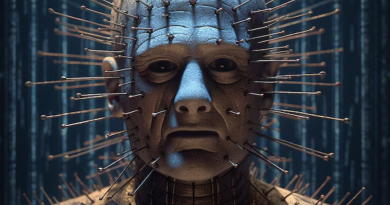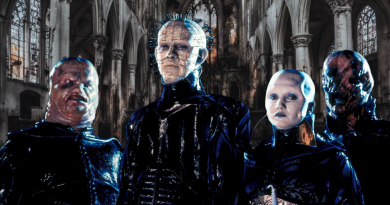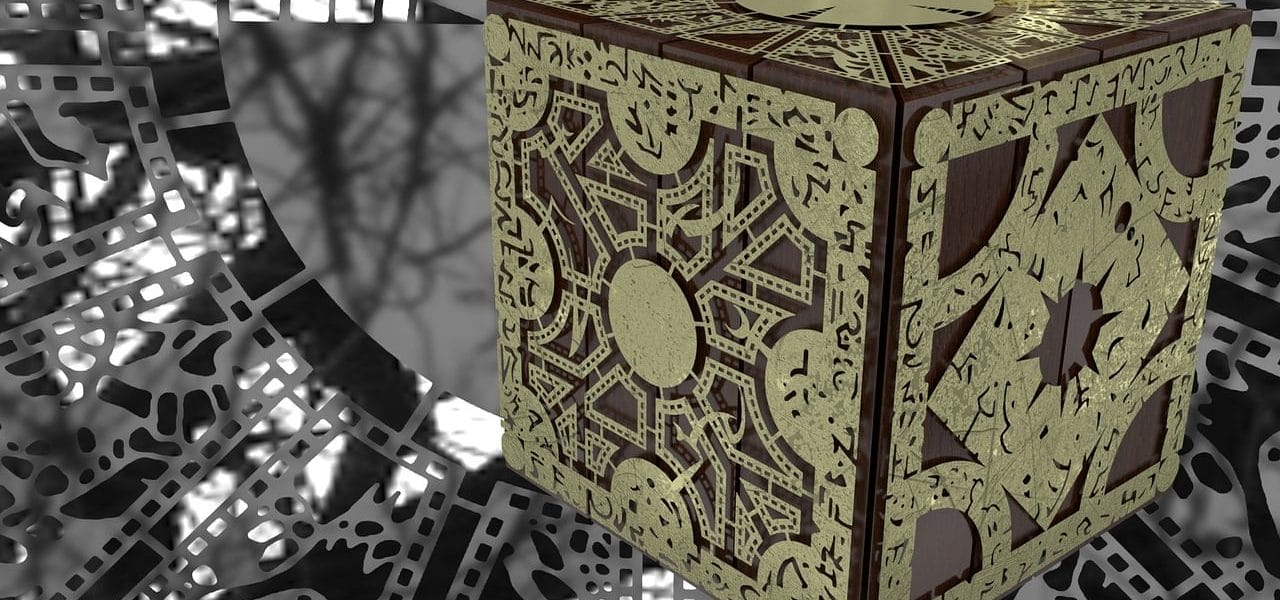Hellraiser Lore Part 3
The 7 Configurations
n the Hellraiser universe, the Lament Configuration is the most iconic and well-known puzzle box, serving as a gateway to the Cenobites’ dimension. However, the expanded mythology of Hellraiser introduces multiple configurations, each representing a different aspect of the puzzle boxes’ power and intended purpose. These different configurations are described as gateways to various forms of experiences or different types of enlightenment, usually tied to a specific facet of human desire or suffering. While the canon can vary, especially between films, comics, and other media, the “seven configurations” is an idea that comes from a broader exploration of the mythology surrounding LeMarchand’s boxes.
1. Lament Configuration (The Lament Box)
- Purpose: The Lament Configuration is the most well-known box and the one featured prominently throughout the films. Its primary purpose is to summon the Cenobites and open a gateway to their realm, leading the solver to an experience of pain and pleasure that transcends ordinary human sensation.
- Meaning: It represents “lament,” associated with grief, suffering, and regret. Those who solve the Lament Configuration typically find themselves regretting their decision once the Cenobites arrive, as they did not fully comprehend the nature of what they were seeking.
2. Leviathan Configuration (The Box of Knowledge)
- Purpose: The Leviathan Configuration is linked directly to Leviathan, the ruler of the Labyrinth. It represents knowledge, power, and enlightenment. The solver is often granted an understanding that exceeds the human realm, but at a cost—often leading to their transformation into a Cenobite.
- Meaning: This configuration symbolizes an insatiable thirst for forbidden knowledge and the pursuit of truth beyond what the mortal mind can handle. It is a gateway for those who seek power and insight but often leads to them becoming twisted avatars of Leviathan’s will.
3. Limbus Configuration (The Box of Chaos)
- Purpose: The Limbus Configuration, often described as a “box of chaos,” serves to open portals that blur the lines between the Cenobites’ world and the mortal plane. It can summon creatures or phenomena from the Labyrinth and unleash chaos into the world.
- Meaning: This configuration embodies disorder, unpredictability, and entropy. It is often sought by those who crave chaos, violence, or the collapse of existing order.
4. Lore Configuration (The Box of Truth)
- Purpose: The Lore Configuration reveals hidden truths to those who solve it, often truths that they may not wish to confront. The solver is faced with profound and sometimes unbearable realizations about themselves or the nature of existence.
- Meaning: This configuration represents knowledge that is dangerous—understanding the true nature of the self, the world, or the cosmos, but at a price. The truths revealed often lead to despair or madness, showing the cost of seeking absolute truth.
5. Lauderant Configuration (The Box of Desire)
- Purpose: The Lauderant Configuration is designed to fulfill the deepest desires of the person who solves it. However, the fulfillment comes in a twisted, often ironic manner that ultimately leads to suffering. It is frequently sought by those who crave power, beauty, or carnal experiences.
- Meaning: It symbolizes desire and the dangers inherent in unchecked want. The Lauderant Configuration grants wishes, but in the dark and perverse way typical of Hellraiser’s themes, where desire becomes the source of suffering.
6. Lazarus Configuration (The Box of Resurrection)
- Purpose: The Lazarus Configuration is used to bring back the dead, though not without a cost. Those resurrected often come back altered, corrupted, or tied to Leviathan’s domain in some fashion, and the price for their resurrection can be steep.
- Meaning: This configuration represents the human fear of death and the lengths people will go to in order to bring back lost loved ones. It plays on the theme of resurrection, echoing the idea that cheating death comes with consequences that often outweigh the benefits.
7. Lamentation Configuration (The Box of Sacrifice)
- Purpose: The Lamentation Configuration is a box that requires a sacrificial act to be solved. It demands that the solver give up something precious—be it a loved one, part of their soul, or something deeply tied to their identity. In return, the box offers a form of transcendence.
- Meaning: It represents sacrifice and the concept that achieving transcendence or a higher state of being requires giving up something fundamental. It plays on the notion that profound experiences or enlightenment cannot be achieved without great personal cost, often leading to the solver’s own downfall.
Overview and Significance
The seven configurations each represent different aspects of the human condition—desire, knowledge, chaos, sacrifice, and resurrection. LeMarchand’s boxes are gateways not just to the Cenobite realm but to different forms of human experience pushed to their limits. Each box is a manifestation of a different facet of human obsession, and opening any of these boxes leads the solver to face their own desires or fears, often in horrifying ways.
LeMarchand, the creator of these boxes, was fascinated by the pursuit of the ultimate experience—one that blurs the line between the divine and the damned, between heaven and hell. The configurations are crafted to lure those who seek more than the ordinary, offering the promise of power, knowledge, or pleasure but ultimately exacting a price that far outweighs the reward.
The mythology of the Hellraiser franchise is steeped in themes of transgression, the pursuit of forbidden knowledge, and the consequences of human desire. Each configuration reflects the duality of human nature—our yearning to transcend the mundane, and the peril inherent in that yearning. The boxes lure people by promising fulfillment, but their rewards are inevitably twisted by the Cenobites and Leviathan, transforming human desire into inescapable suffering

Hellraiser Lore Part 1
“Hellraiser” is a British horror franchise created by Clive Barker, based on his novella The Hellbound Heart. The franchise, which

Hellraiser Lore Part 2
Cenobite Origins The origins of the Cenobites are central to understanding the dark mythos of the Hellraiser universe. Cenobites were
